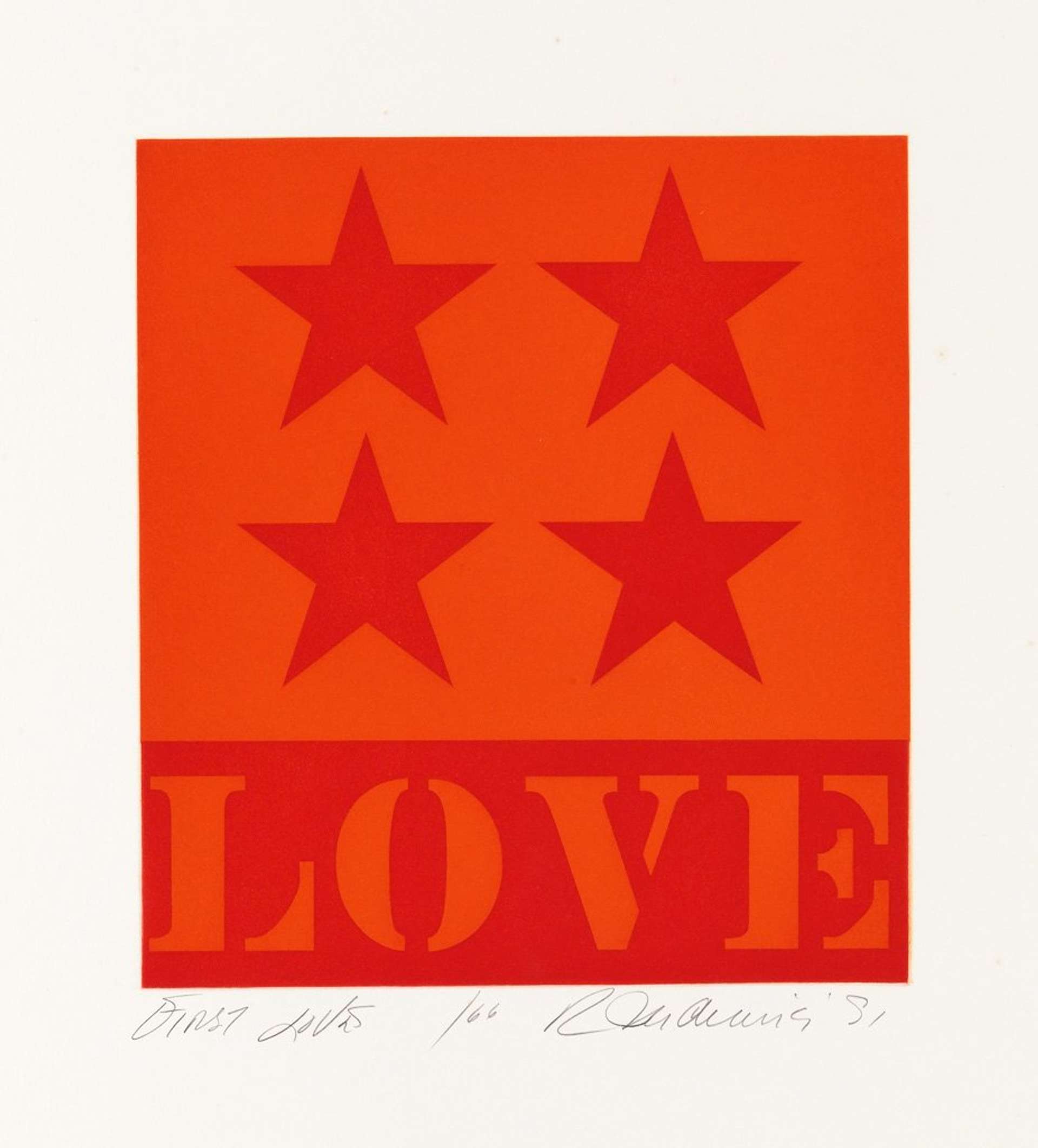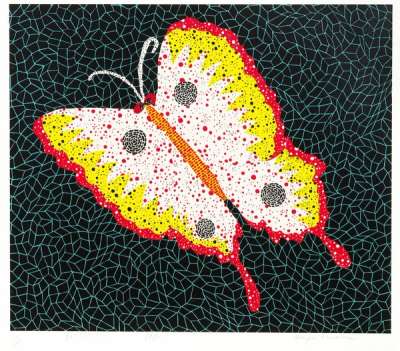The Appetite for Affordable Art Among Millennials

 Danny Windsor in front of Roy Lichtenstein's Whaam! © Amber Vellacott 2022
Danny Windsor in front of Roy Lichtenstein's Whaam! © Amber Vellacott 2022Market Reports
In recent years, the art world has experienced a significant shift, driven by a new generation of collectors seeking to make their mark. Millennials in particular have recently discovered the joys of affordable art collecting, challenging the notion that art is exclusively for the affluent. As this demographic navigates the dynamic landscape of art appreciation, they are discovering creative ways to indulge their passion without spending considerable amounts.
The Changing Landscape of Art Collecting
The landscape of art collecting has undergone a dramatic transformation in recent years, fueled by the rise of digital platforms and the influence of a new generation of collectors. With online galleries and e-commerce platforms becoming increasingly prevalent, the once-exclusive art market has opened its doors to a broader audience, making art collecting more accessible and affordable for millennials. While in the past the art world was primarily dominated by a select few, with elite galleries and high-end auction houses dominating the market, the emergence of digital platforms has democratised the art scene and enabled a wider range of artists and collectors to participate.
According to a 2023 report by Hiscox, although fewer people bought art online in 2022 – 78% compared to 85% the previous year – the number was still considerably above pre-pandemic levels (44% in 2019). More than half of art buyers said that their confidence and interest in buying art online had increased during the pandemic, and 57% of Millennials have said they would purchase art online. Millennials are two times more likely than boomers to consider art as a financial asset, blurring the line between collectors and dealers.
 Image © Sotheby's / 101 Bored Ape Yacht Club © Yuga Labs 2021
Image © Sotheby's / 101 Bored Ape Yacht Club © Yuga Labs 2021Millennials & NFTs
Millennials have embraced the digital art landscape, discovering and purchasing art through social media platforms. This shift towards digital platforms has provided millennials with a more accessible entry point to the world of art collecting, as they can now explore and purchase art from anywhere in the world. The advent of digital art and NFTs has also played a significant role in this transformation. NFTs have opened up a new market for digital artists, allowing them to monetize their work and reach a global audience. This technology has further contributed to making art collecting more affordable, as digital art often comes with lower price points compared to traditional art.
The rise of online galleries, digital platforms and NFTs has made art collecting more accessible and economical for the younger generations, expanding the range of artistic styles and mediums available for purchase. As the art world continues to evolve, we can expect these mediums to shape the future of art collecting, making it a more inclusive and diverse space for all.
What Kind of Art are Millennials Buying?
Millennials have made their impact on the art world, distinguishing themselves with their unique preferences and distinct buying patterns. As a generation driven by individuality and personal expression, they gravitate towards contemporary and emerging artists who resonate with their tastes and sensibilities.
Contemporary and emerging artists have found a keen audience among millennial collectors. These artists often explore themes and issues that resonate with the generation, such as social justice, environmental concerns and identity politics. Moreover, emerging artists tend to offer more affordable price points, making their works accessible to budget-conscious collectors. A notable example is Kehinde Wiley, an American painter who gained worldwide recognition for his vibrant and powerful portraits of African Americans. His work reflects themes of representation and cultural identity, striking a chord with many millennial collectors. In addition to contemporary artists, millennials have shown a keen interest in street art and urban contemporary genres. The works of artists like Banksy and Mr. Brainwash have garnered significant attention from this demographic since their art also acts as a form of social commentary, tackling issues such as political corruption, consumerism and climate change.
Another key factor influencing millennial art purchases is personal taste. As art collections often serve as an extension of their identity, millennial collectors are more likely to buy art that they feel a personal connection with, rather than solely based on investment potential or prestige. For instance, millennial collectors might be drawn to the vibrant, whimsical works of Yayoi Kusama or the surreal, dream-like creations of Camille Rose Garcia. These artists showcase unique perspectives that resonate with millennials’ desire for self-expression and authenticity. Millennials appreciate the innovative nature of digital art, having embraced the digital art world more than other generations, with many purchasing NFTs by artists like Beeple and Pak.
The art preferences of millennials are diverse, reflecting individual preferences and wider relevant issues. Contemporary and emerging artists, street art and digital art are particularly popular among this generation, as they offer fresh perspectives and often address topics that resonate with millennials. Ultimately, personal taste plays a significant role in shaping millennial art collections, with many prioritising self-expression and authenticity over traditional factors.
How to Collect Art on a Budget
Collecting art on a budget might seem like a daunting task, but with the right approach and a keen eye, anyone can start building a meaningful and affordable collection. There are many practical tips and advice on how to embark on your art collecting journey without breaking the bank, especially when you do your research and explore various avenues for finding affordable art – both online and offline.
As usual, when making a significant purchase such as art, it's essential to carry out thorough research. You should aim to familiarise yourself with the art world by visiting museums, galleries, and art fairs to gain exposure to various styles and mediums. Following art blogs, podcasts and social media accounts will enable you to stay updated on emerging artists and trends, helping you develop your personal taste and make informed decisions when purchasing art. Attending local art events such as open studio tours, art walks and pop-up exhibitions allow you to establish connections with artists and fellow collectors, which may lead to valuable insights and opportunities. These events also often showcase works by emerging artists at more affordable prices.
 MyPortfolio © MyArtBroker 2023
MyPortfolio © MyArtBroker 2023The rise of online galleries and digital platforms has made finding affordable art easier than ever. Websites such as MyArtBroker offer a vast selection of original artworks at different price points. You should consider purchasing alternative mediums such as photography, prints, and digital art, which can yield more budget-friendly options. Limited edition prints or photographs, for instance, can be an affordable way to own works by renowned artists like Damien Hirst or Banksy. Acquiring works by emerging artists can also be a smart strategy for collecting affordable art; as their careers progress, the value of their works may appreciate over time. Online platforms have also democratised the purchasing experience, allowing you to buy directly from artists and emerging galleries. Many artists offer lower prices for their pieces when sold directly, as they can avoid paying commissions to galleries or auction houses. Emerging galleries, on the other hand, often promote up-and-coming artists and may offer more affordable options compared to established galleries.
Before diving into the art market, you should determine a budget that you're comfortable with and adhere to it. Be patient and take your time to find the right pieces that fit both your taste and budget. By leveraging online platforms like ours, attending local art events and fairs, and purchasing directly from artists or emerging galleries, you can build a unique and meaningful collection without overspending. Keep in mind that your collection should reflect your personal taste and interests, so take the time to educate yourself and make informed decisions when acquiring art.
 Image © Arts Economics and UBS report 2020
Image © Arts Economics and UBS report 2020 How Much do Millennials Spend on Art?
The Art Basel and UBS Global Art Report illustrates how Millennials have played a crucial role in helping the art world recover post-pandemic. The same report found that millennial buyers spent the most in the first half of 2021 – almost double that of Gen X and nearly four times that of Boomers. Women are leading this trend, reportedly spending a significantly higher average than their male counterparts, with 34% of female collectors spending more than $1 million in the past few years versus 25% of men.
Setting a budget and adhering to it is crucial for millennials looking to build a meaningful art collection without overspending. By determining a comfortable price range when acquiring art, they can avoid impulse purchases that could strain their finances. This disciplined approach helps millennials cultivate a collection that reflects their personal taste and interests, while also being financially sustainable.
Investing in art can be a rewarding long-term strategy for millennial collectors, as it provides cultural and financial benefits. By acquiring works from emerging artists or alternative mediums, they have the potential to see their investments appreciate over time as the artists' careers grow and their works gain value. Moreover, art collecting can serve as a form of diversification within a broader investment portfolio. However, it's essential to remember that not all art will rapidly appreciate in value, and investing in art should not be the sole motivation for building a collection. Millennials are likely to focus on acquiring pieces that resonate with their personal taste and interests, viewing any potential financial gains as a bonus rather than the primary goal.
Overcoming Common Challenges in Art Collecting
Art collecting can be an exciting and rewarding endeavour, but it also comes with its share of challenges, especially for those who are new to the art world. The first hurdle for novice art collectors is usually a lack of knowledge and familiarity with the art world, as the sheer amount of information about artists, styles, and history can be overwhelming. As we have seen, the best way to remedy this is to educate and expose yourself to the art world, which will increase your confidence in making informed decisions.
There can also be a fear of making a wrong decision or overpaying for a piece, which can be paralysing for new collectors. Keep in mind that every collector makes mistakes, and they are an essential part of the learning process. You should start small by purchasing more affordable pieces, and be mindful that your taste and preferences will likely evolve over time. Many millennials face financial constraints, which can make it difficult to build a substantial art collection, but there are ways to mitigate the financial impact – including investing in emerging artists and alternative mediums. You should stick to your budget, and don’t be afraid to ask for advice from more experienced collectors, gallerists or art advisors.
With the rise of digital platforms and online galleries, the art market has become more accessible but also more challenging to navigate, as it can be difficult to determine the quality and authenticity of an artwork solely based on digital images. This is why it is important to extensively research the artist you are interested in purchasing and their work. You should also only work with reputable platforms, which will perform their due diligence in ascertaining the authenticity and provenance of these works, protecting your investment.

Millennials and the Future of the Art Market
Collecting affordable art is achievable with research, patience and a willingness to explore various avenues. The world of art collecting has become more accessible and transparent, thanks in part to the influence of millennials and the rise of digital platforms. As this generation navigates the challenges of collecting art on a budget, they are discovering a wealth of affordable and meaningful art that resonates with their values and interests. By embracing contemporary and emerging artists, exploring alternative mediums and focusing on personal preference, millennials are shaping the future of art collecting and democratising the art market.
As the landscape of art collecting continues to evolve, the impact of millennials will undoubtedly be felt for years to come, fostering a more inclusive, diverse, and accessible art world for all.




























